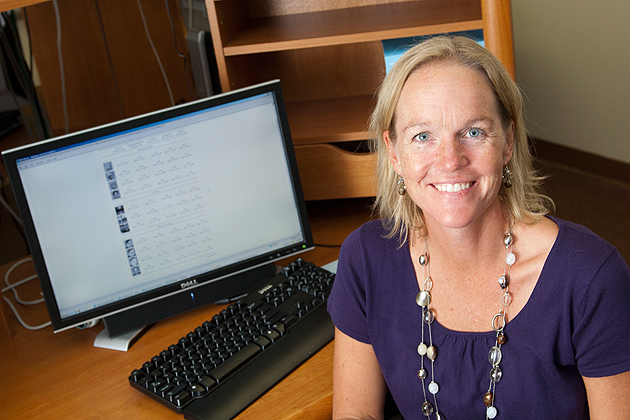
Kristine Nowak isn’t rushing to join the newest social network. In fact, she thinks that on the surface, the claims Google Plus is making to be something completely new are a bit of a hoax.
“I see very little new in Google Plus,” she says. “I don’t see anything that Google Plus is doing that Facebook isn’t doing – though they may do some things better.”
But, she’s quick to add, having nothing new to offer to today’s social media world might not matter in the least. What matters, she says, is people’s perception of novelty.
“Innovations don’t have to be new. They just have to be thought of as new,” she says, adding that this concept is a basic principle of communication science.
And she should know. Nowak, associate professor of communication sciences in the College of Liberal Arts and Sciences, studies how different types of media – advertisers, social networks, technologies – are created, marketed, and perceived.
Communication scientists accept that several factors need to be in place for an innovation to be successful, she says. People have to first know about the new technology, and once they hear about it, they assess whether it will fill a need in their lives. Then they try it out, and if they believe it’s easy enough to use and fulfills their need, they may adopt it.
Given these requirements, it’s very easy for even an important breakthrough to be glossed over. Only about 5 percent of innovations succeed, Nowak says.
Will people switch?
In the case of Google Plus, which allows easy creation of social groups and a cleaner, ad-free interface, Nowak thinks that the social network could be successful in convincing the public of its novelty. But getting people to move from their social network of choice – in most cases, Facebook – could be difficult.
“To convince people that it’s worth the cost of switching from what they already use will be hard,” she says.
On the other hand, she notes, many people don’t think critically about whether an innovation is useful or just a fad. Companies spend billions trying to persuade their customers to do things or buy products, so Nowak advocates media literacy: the ability to evaluate messages from various media outlets.
Evaluating avatars
Nowak started her career in politics, where she was fascinated by the power of persuasion. In particular, she wondered, how does the medium in which a message is delivered can affect the message itself?
Phone calls and door-to-door canvassing are tried-and-true ways to deliver a candidate’s message. That’s because if the person at your door or on the other end of the line seems credible, says Nowak, the message often seems credible too.
Today Nowak studies the same concept on the Web. People represent themselves online by using a graphic, and Nowak is interested in the credibility of these avatars.
“There’s a high level of confidence in your perception of someone when meeting face-to-face. But are people honest in their self-presentation online?” she asks.
Her research has found that although people can make any likeness of themselves online, most people choose icons that are honest about who they are or what they’re like in the online community.
“There’s no more attempt to deceive than in real life – if they’re short, they don’t pick a tall avatar so they seem tall,” she says. “Sometimes people focus on how an avatar differs from a person physically, instead of looking at what the person wanted to present.”
Often, says Nowak, people choose avatars that represent some aspect of their personality instead of their physical appearance. People who like sports often use avatars that include sports equipment, or musicians use musical instruments.
Like political candidates, the nature of an avatar can affect the message it conveys, and people may stereotype a person or an entity based on their icon. Nowak’s future research will focus on the characteristics of avatars that are most persuasive to people, such as iconic advertising personalities.
Nowak hopes to work with UConn’s new Center for Digital Media to create digital representations of particular characteristics of avatars.
“UConn’s virtual reality research could really benefit from this center,” Nowak says.
Risking innovation
As for Google Plus, Nowak says it’s too soon to predict success or failure in an industry that can take up to 20 years for innovations to take hold.
But even if Google isn’t successful in convincing the public that it needs its online community, that won’t be the end of the world, she adds.
“Failure’s not a bad thing. Companies have to try new things and throw things out there in order to find new innovations,” she says. “Companies only fail when they stop trying to come up with new innovations, because then they will be left behind.”



